Drafting Patternmaking Bust Cup Sizes
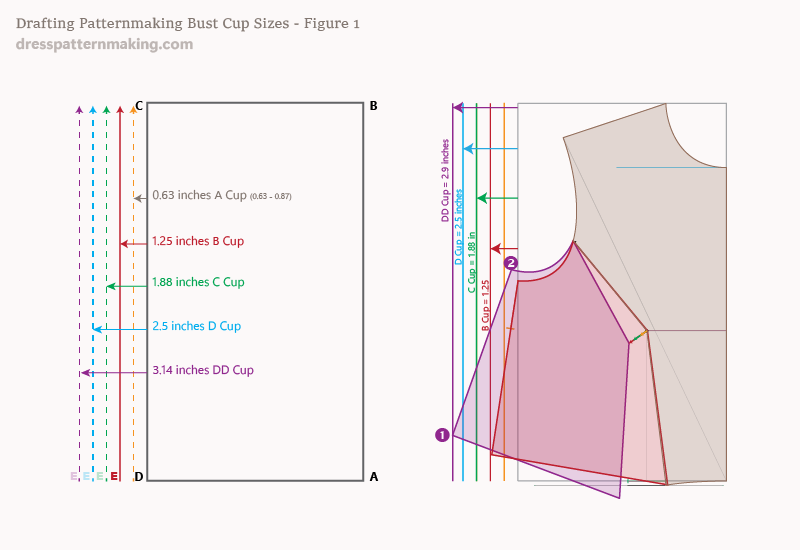
This article is to answer a question that I have had asked a number of times; basically "How/Where did I come up with the figures I use in Figure 2 in the Bodice Front Instructions that relate to drafting different bust cup sizes". This information is already in numerous articles on my website, but I am pulling it all together here to try to answer that question in just one article.
Drafting For Different (Patternmaking) Bust Cup Sizes
My instructions for drafting the Bodice Front Block has directions for including Bust Cups Sizes within the block making process. In all of the patternmaking instructions theory I found in respected patternmaking books when I was learning block making, I only ever found standard instructions for drafting a (Patternmaking) B Bust Cup. (I never saw it specified that it was a B Cup, I realized it over time). In these textbooks, it seemed that the standard practice was to draft a block with a B Cup, and then make a Full Bust Adjustment as a second and separate step to make blocks with larger or smaller bust cups. So the Full Bust Adjustment would appear in the Adjustments section of the book. I saw that it must be possible to draft blocks directly to the Bust Cup required and not bother with the intermediary step. I came up with a method for doing so and tested it. When I tested it I checked it against the accepted wisdom and theory of respected and knowledgeable patternakers. Below is the image from my Bodice Block making instructions where the (Patternmaking) Bust Cup size is taken into account:
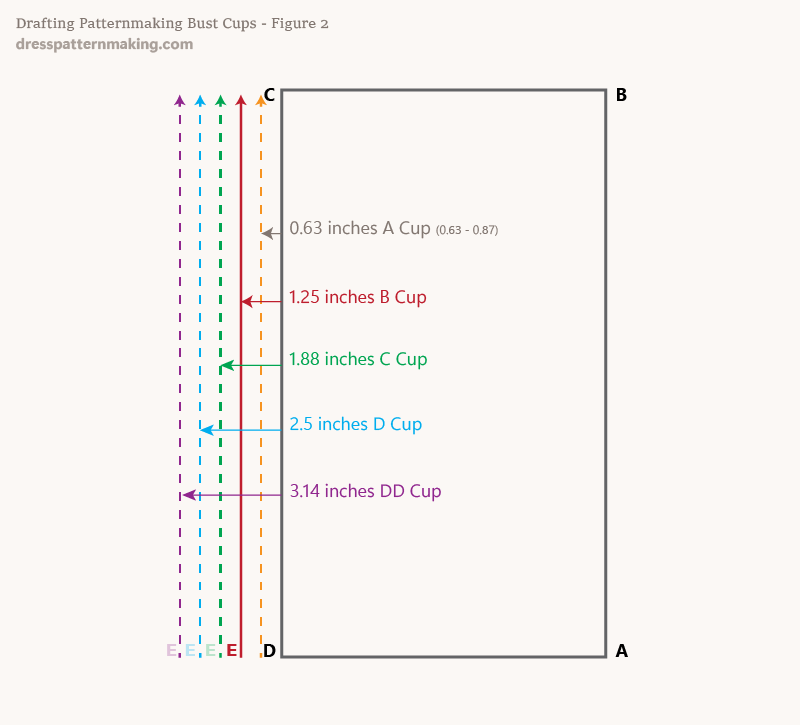
The Question
The question I have had people ask (a lot recently) is how I arrived at those specific numbers shown in the image:
- 0.63 inches for a B Cup
- 1.25 inches for a C Cup
- 1.88 inches for a C Cup
- 2.5 inches for a D Cup
- 3.15 inches for a DD Cup
The (start of the) Answer
I can't answer this in a sentence or two. Firstly I think I need to cover the basics again, repeating a lot of what I have written in other articles, in case someone comes directly to this article without reading my others.
How are Bust Cup Sizes Defined?
For the purposes of block and patternmaking, bust-cup sizes are based on the difference between the measurement of yourUpper Bust and your Bust. If you subtract your high bust from your full bust, the difference determines your cup size.
- 1″ = A cup
- 2″ = B cup
- 3″ = C cup
- 4″ = D cup
- 5″ = DD cup (or E cup)
- 6″ = DDD cup (or F cup)
The Difference between Patternmaking Cup and Bra Cup
With a bra, cup size is based on the difference between your bust and your under-bust. In patternmaking the under-bust measurement is not relevant for the Bodice Block; any fitting that needs to be done under the bust can be done by darts or design lines; e.g. an Empire Line can reduce the amount of ease in the under-bust to provide more fitting. If you think if how the fitting of a bodice garments differs to a bra, and their different purposes, it should be clear why the patternmaking cup is different to the bra cup; When drafting a bodice block, you are concerned with the angle that the fabric falls from the upper bust and how this affects how much fabric is needed at the side of the body to accommodate the bust. The bra on the other hand is about supporting the breasts; the actual support is done by the band, which goes around the under-bust. The under-bust is therefore an essential measurement in bra construction, while it is irrelevant in drafting a Bodice Block. This image may help you see how the upper-bust to bust measurement is so different to the under-bust to bust measurement.
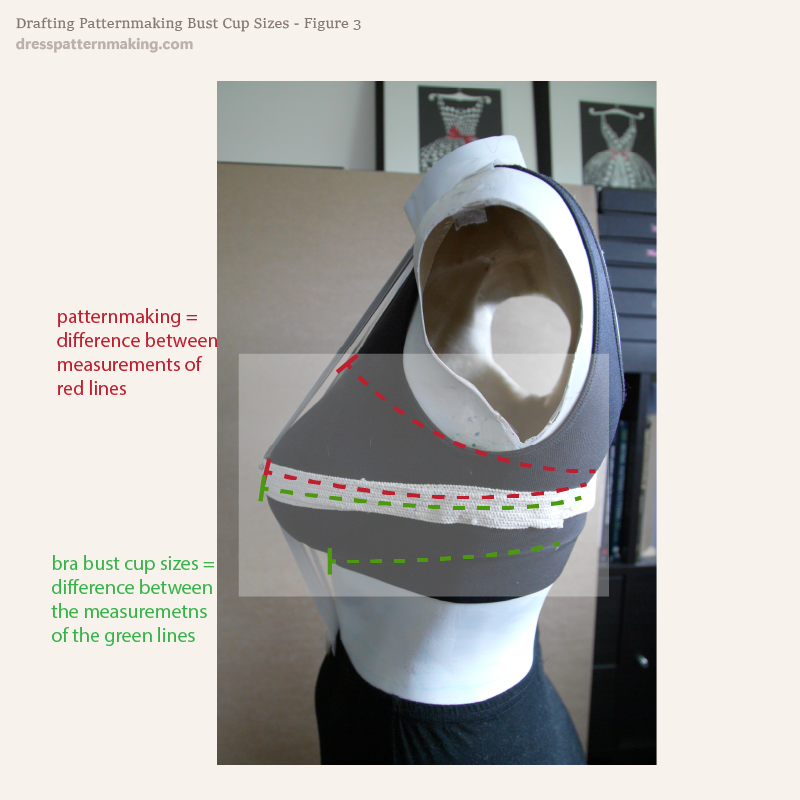
Some people with very large busts in bra-cup sizes (F, G, H), may also have a very large fleshy upper-bust and have only a C or D cup for patternmaking purposes.
Back To The Question
So how did I come up with these numbers:
- 0.63 inches for a B Cup (where the Upper Bust is 1 inch smaller than the Bust)
- 1.25 inches for a C Cup (where the Upper Bust is 2 inches smaller than the Bust)
- 1.88 inches for a C Cup (where the Upper Bust is 3 inches smaller than the Bust)
- 2.5 inches for a D Cup (where the Upper Bust is 4 inches smaller than the Bust)
- 3.15 inches for a DD Cup (where the Upper Bust is 5 inches smaller than the Bust)
...remembering that these numbers relate to drafting the 'E' line which gives you the angle of the side seam, as shown in this image:
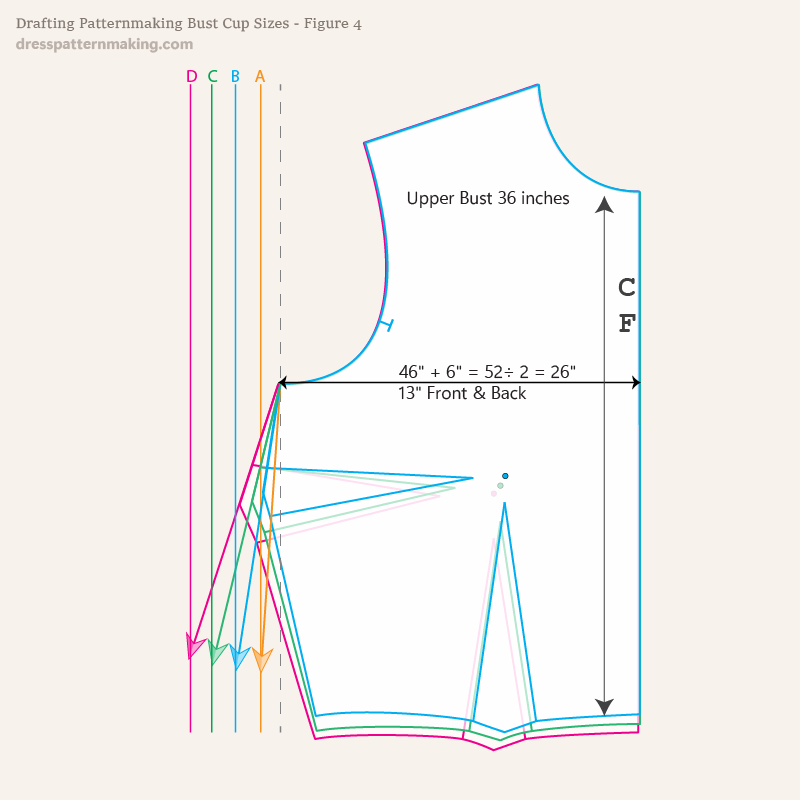
Not a Formula
I think the problem is that some people think that I have created a formula using the Upper Bust and Bust Measurements to determine the angle of the side seam, and from that determine the distance of the E line from the C~D line. I think these people are having trouble replicating my figures using that method. To be very clear: I did not calculate a formula, although I'm sure that it would be quite simple to do so if you're mathematically inclined to do so, and create a formula using all the relevant values, but I never did. The problem is that if you are trying to replicate my figures with a formula, then that the formula will have to take into account that there is more ease included at the Upper Bust Level than there is at the Bust Level. (This is an issue I have covered in detail in other articles). So you will need to include that issue in the formula. For the record, I'm not in the slightest bit interested in doing so, so if you need/want to do that, go for it, but I'm not doing it for you.
So then, how did I come up with these numbers?
Basically I came up with a theory, then I tested it against accepted Patternmaking knowledge/wisdom/theory, and it worked. I tested it numerous times with a number of different sizes. I tested it against Vogue and Butterick Fitting Shells... and it consistently worked. So to give the details:
- I drafted one block to a B-Cup, drawing the 'E' line 0.63 inches to the left of the C~D line. This was the only option given in the book/instructions. (See Image 3 below).
- Using that same block I drafted a C Cup, a D-Cup and a DD-Cup (using accepted knowledge/wisdom from patternmaking books) by the cut-and-spread method. I spread it using the amounts given in the textbooks. See the image below. Figure 5 shows where the block is cut and spread, Figures 6-8 show the bust cup increases.
- I put these on top of each other and compared them, and I saw that what happened to the angle of the side seam (See Image 9.)
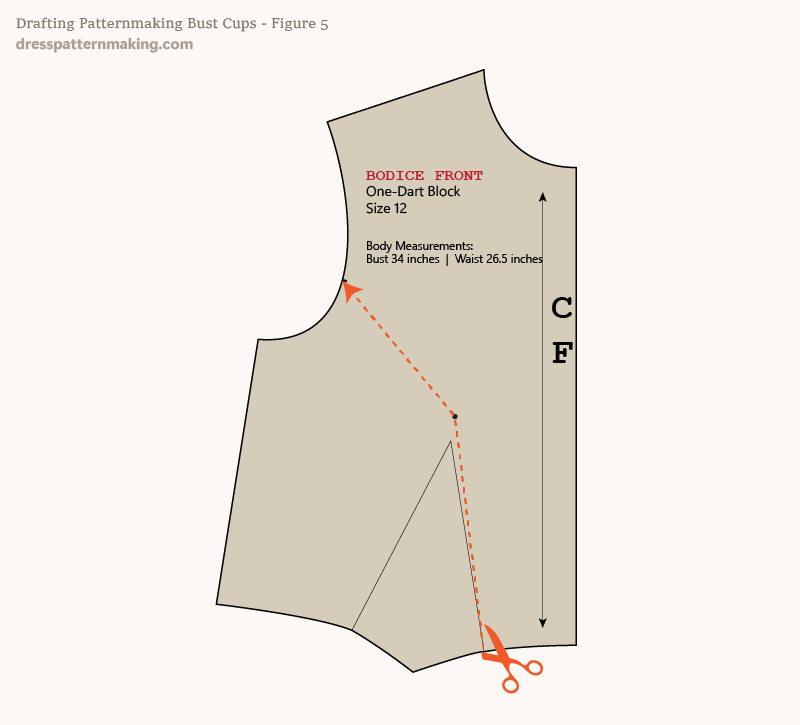
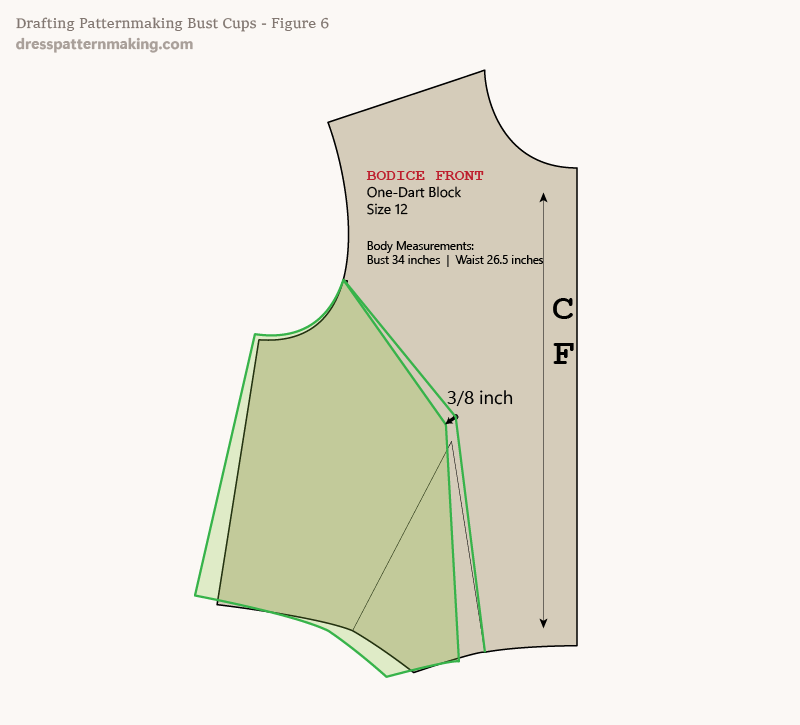
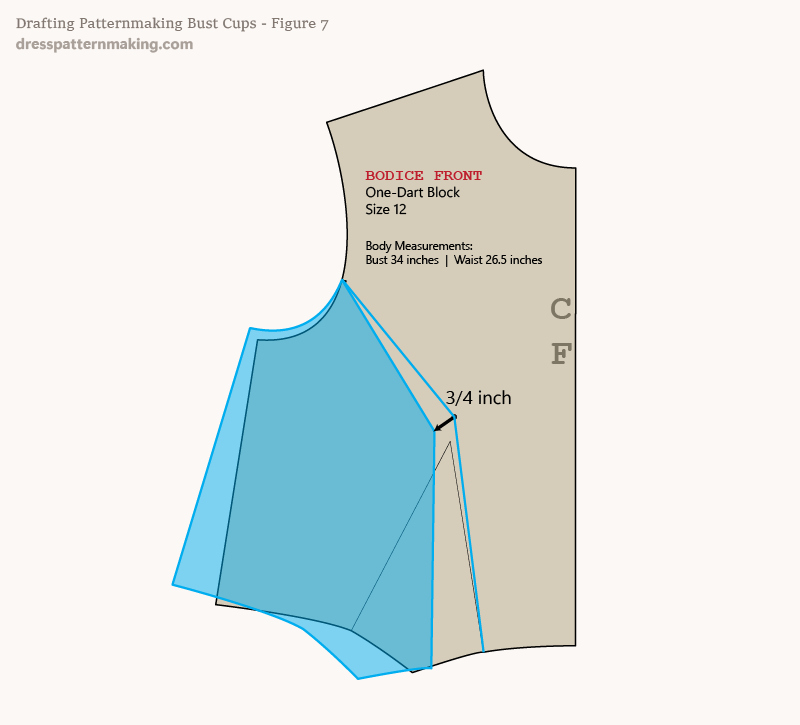
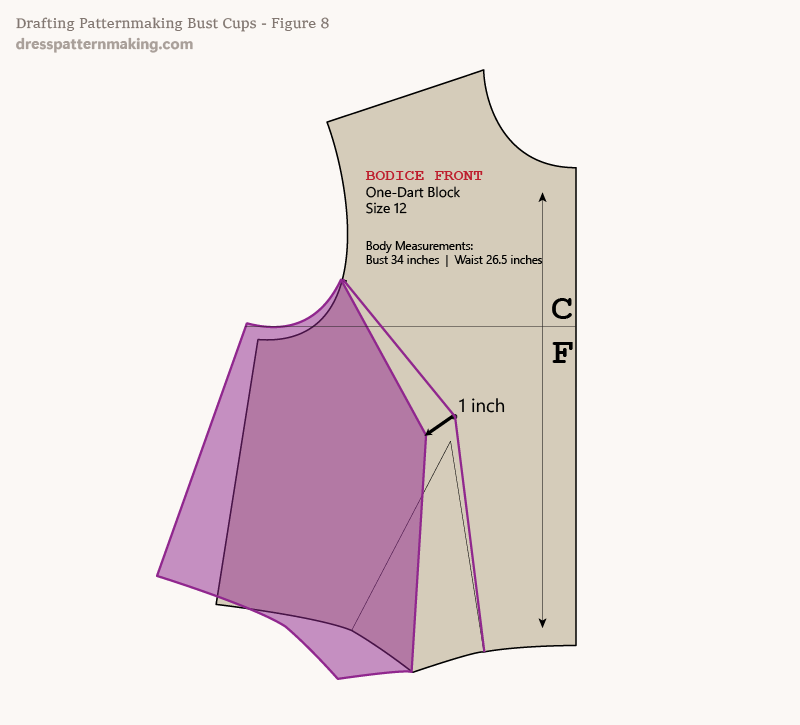
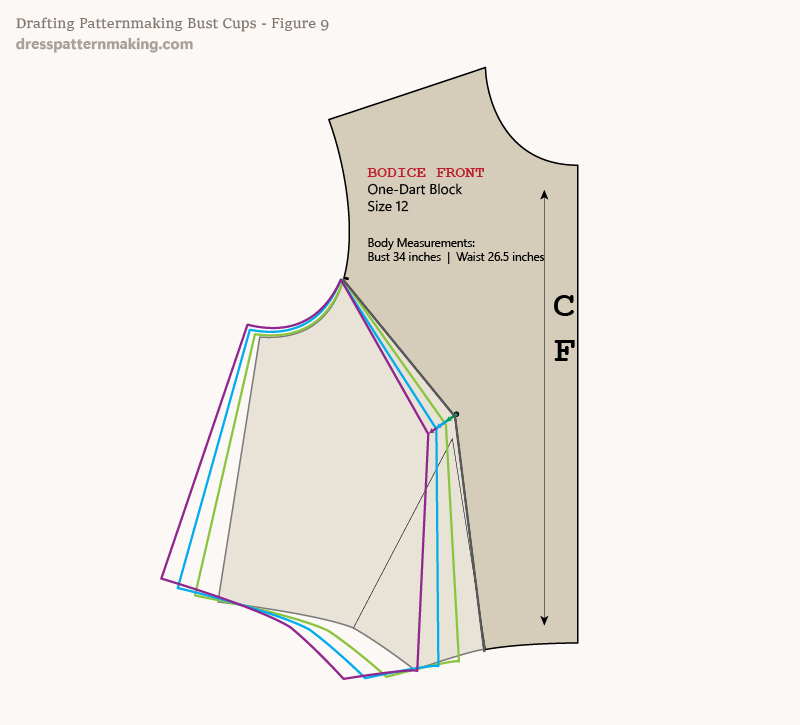
I came up with a Theory
I considered it possible that if I measured out from the block width, that I could draft the Bust Cups using these measurements directly, and bypass the cut-and-spread.
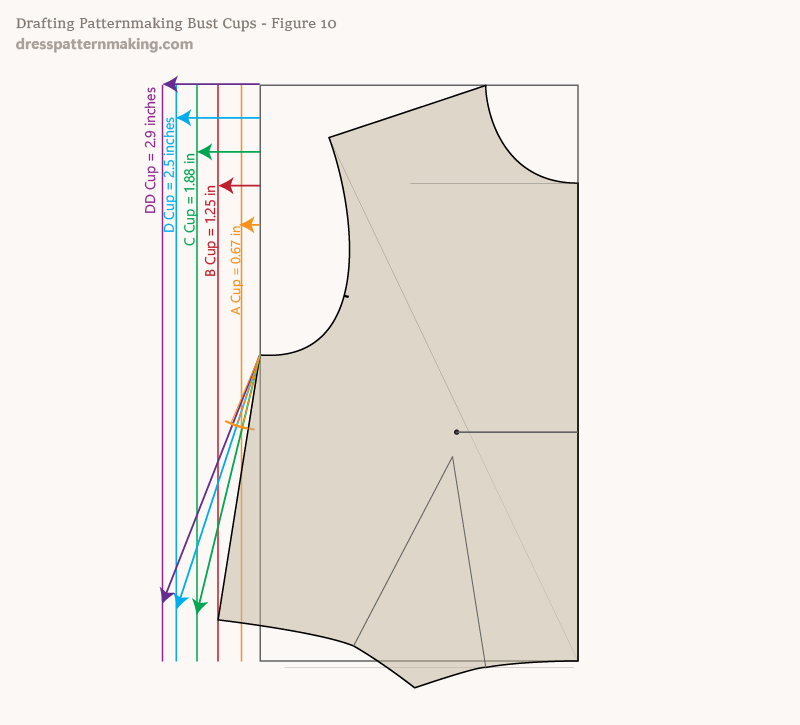
I Tested & Tested & Tested
I then tested it over and over again. For example: I drafted a D Cup Block using my instructions, using a different size to the first one. Then drafted a B Cup using same Upper Bust Measurement, then did a standard Large Bust Adjustments for a D-Cup. I compared them. They were the same. So I arrived at those figures by coming up with a theory and testing it. I tested, I tested, I tested. It worked consistently. I also looked at fitting shells by Vogue and Butterick and saw also fit my theory.
More Reading
Here is an article (the one the above images came from) that shows that a Large Bust Adjustment from Pattermaking Theory results in the same block as drafting those Bust Cup sizes directly using my instructions, in more detail: (link)

